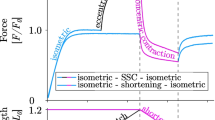Abstract.
It is unknown whether protein phosphatases types 1 and 2A are present in and can regulate the tone of human vascular tissue. The expression and possible function of serine/threonine protein phosphatases (PP) type 1 (PP1) and type 2A (PP2A) were studied in isolated human coronary arteries. Catalytic subunits of PP1 and PP2A were identified by means of phosphatase activity measurement in tissue homogenates, by separation of enriched extracts through affinity column chromatography, by immunoblotting with specific antibodies, by hybridization of mRNA with specific DNA probes and PCR of reverse transcribed mRNA. Based on these methods, the catalytic subunits of PP1(α,β,γ) and PP2A(α,β) were identified. Appropriately, cantharidin, an inhibitor of PP1 and PP2A, increased basal tone of human isolated coronary artery rings with an EC50 of about 16 µmol/l by increasing the phosphorylation state of the regulatory light chains of myosin. In summary, PP1 and PP2A are expressed in human coronary arteries and they can alter vascular tone.
Similar content being viewed by others
Author information
Authors and Affiliations
Additional information
Electronic Publication
Rights and permissions
About this article
Cite this article
Knapp, J., Bokník, P., Deng, M. et al. On the contractile function of protein phosphatases in isolated human coronary arteries. Naunyn-Schmiedeberg's Arch Pharmacol 360, 464–472 (1999). https://doi.org/10.1007/s002109900124
Received:
Accepted:
Issue Date:
DOI: https://doi.org/10.1007/s002109900124




